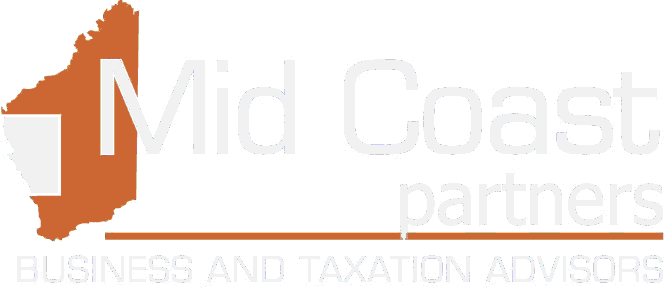Newsletter
Qantas CEO Alan Joyce had a pie shoved in his face at a business breakfast in May 2017 for Qantas’s proactive position on same sex marriage. The protagonist, a 67 year old former farmer claimed that Joyce is, “… very much part of a network trying to subvert the federal parliamentary process around the issue of marriage equality.”
The issue of corporate clout being used to promote social agendas was later attacked by the Minister for Education and Border Protection, Peter Dutton at a Liberal National Party State council meeting stating that, “It is unacceptable that people would use companies and the money of publicly listed companies to throw their weight around.” And, executives like Alan Joyce should “stick to their knitting.”
Then, there were the calls to boycott the airline from tennis legend Margaret Court and others in the community.
Qantas is not alone. Car maker Holden’s sponsorship of the 2017 Gay and Lesbian Mardi Gras (see Out Loud and Proud) and their pledge to support Australian Marriage Equality also came under attack from some consumers threatening to boycott the company.

Threatening to boycott a company is not new although generally it is in pursuit of change. When a business upsets a customer or a group of customers it’s the first thing that’s actioned; after all, consumers vote with their wallets. In 1955, during the American civil rights movement a boycott by blacks and whites almost crippled a bus company. The controversy was sparked after Rosa Parks refused to give up her seat for a white man. The bus service had to desegregate or face bankruptcy. Similar protests were held in stores to desegregate lunch counters. Martin Luther King Jr., knew the power of ‘economic withdrawal’ and used it effectively, calling to “redistribute the pain” to corporate America.
Qantas has not suffered for being at the epicentre of the gay marriage debate. In it’s most recent results the company achieved an underlying profit before tax of $1,401 million – the second highest in its history. The airline has clearly not alienated its customer base. The result however follows three years of pain and restructuring.
Joyce attributes the airline’s performance to the diversity of the management team who led the transformation telling The Australian, “…as a gay Irishman running a national carrier it absolutely shows the meritocracy Australia is, and that diversity generated better strategy, better risk management, better debates [and] better outcomes.”
Mr Joyce was named a Companion of the Order of Australia (AC) in the Queen’s Birthday 2017 Honours List for his services to “the aviation transport industry, to the development of the national and international tourism sectors, to gender equity, inclusion and diversity, and to the community, particularly as a supporter of Indigenous education.”
For Holden, the diversity push is aligned to a shift in the type of worker it wants to attract. With the last manufacturing plant closing down this year, its workforce has dramatically changed from manufacturing to design, engineering, administration and sales. Holden’s Managing Director Mark Bernhard states that Holden is working to “to shake off the ‘blokey’ reputation our brand has been saddled with for years.” Diversity is a strategic goal. On its blog, Holden states that 27% of its corporate workforce is now women. The company is aiming to increase this target to 50% within 5 years.
“We know the commercial rationale of becoming more gender balanced, including over 80% of vehicle buying decisions being influenced by women,” Bernhard says. “But, we also have a social responsibility to help move our country forward by lending our voice and influence to issues that matter….I want Holden to be a leader; a leader in our industry, a leader in society, a leader who can change behaviours. If we don’t do it, who will?” Bernhard says.
In August, the German EDEKA retail outlet in Hamburg made a very physical point about racial diversity by stripping the supermarket’s shelves of all goods not produced or sourced in Germany. The result; the shelves were almost bare. Instead, staff made signs saying (translated) “This is how empty a shelf is without foreigners”. The independent supermarket’s bold anti-xenophobia campaign went viral. The company actively promotes a culture of diversity and the campaign has not only reinforced that brand value but attracted positive global feedback. But, the initiative was not without its detractors as the campaign is a month out from Germany’s federal elections.
But what about influence through association? In April, the Catholic Archbishop of Hobart wrote an article for The Australian newspaper commenting that there “is an increasingly insidious presence operating in our corporate sector. This presence is the existence of so-called “diversity” organisations and committees. Far from promoting authentic diversity within our businesses, they have become the means to impose a particular social agenda.” The Archbishop cites scenarios where senior employees were forced to remove themselves from involvement with groups publicly in conflict with their employer’s support of the LGBTI community. While we’re not sure what “authentic diversity” is as opposed to plain vanilla diversity, it’s an interesting debate. What happens if an employee’s public representation and support for an organisation is in conflict with their employer’s public position?
The fundamental rule for any business seeking to embrace a social position is to understand your market. If your business’s social agenda is likely to alienate your market rather than encourage or diversify it, then think twice. If an initiative does not enhance the business’s reputation with its customers, or enhance its culture with existing and potential staff, then why bother? Every initiative needs to have a measureable purpose and be aligned to your business’s strategic direction.
In their book Leveraging Corporate Responsibility: The Stakeholder Route to Maximizing Business and Social Value, authors Bhattacharya, Korschun and Sen experiment with what drives value in corporate responsibility. They found that “well-meaning corporate-responsibility activities can actually harm a company’s competitiveness.” This is primarily the case for businesses perceived as having low product quality. Consumers took the view that these businesses should just focus on their product not other activities. But, for businesses perceived to have high product quality, the corporate initiatives enhanced public perception and the likelihood to buy. The key take outs were:
- Don’t hide market motives – people understand that there needs to be a business case.
- Serve stakeholders’ true needs – set clear objectives and achievable targets, and work together with key stakeholder groups.
- Test your progress – assess initiatives regularly to ensure they foster the desired unity between the business’ and stakeholder goals.
In every period of social change there is vitriolic debate. Before entering the fracas think about what footprint you are creating for your business and what this might mean if you are on the wrong side of history. Unlike in 1902 when the suffragette movement in Australia won the right for women to vote and stand in Federal elections, what is said and done is not merely recorded on paper – it’s freely available and accessible on the internet for a long time.

ASIC is in the midst of a concerted campaign targeting private companies that have outgrown the reporting exemptions.
ASIC requires companies to prepare and lodge a financial report and a directors’ report each financial year, and have the accounts audited unless the company is exempt. Most small companies are exempt from the compliance requirements as are small foreign owned companies in certain circumstances.
Utilising data from the Australian Taxation Office (ATO), ASIC is contacting companies that have moved beyond or not complied with the exemption and are now in breach of their reporting requirements.
If your company has never had to lodge financial reports with ASIC in the past, it’s very easy to breach the rules without realising it. The reporting requirements are hard and fast and ASIC is not overly sympathetic to “oops” as a reason for a breach.
What is a small company?
Small companies are exempt if they satisfy at least two of the following:
- The consolidated gross revenue for the financial year for the company and any entities the company controls is less than $25 million
- The value of consolidated gross assets at the end of the financial year of the company and any entities it controls is less than $12.5 million, and
- The company and any entities it controls have fewer than 50 employees (full time equivalent) at the end of the financial year.
No longer a small company? Then you are a large company and are required to lodge audited financial statements.
Will the auditor want to audit the previous year’s figures when we were still a small company? Yes.
This exemption is for companies not controlled by a foreign entity or disclosing entities.
Failure to lodge annual accounts with ASIC may result in penalties and potentially the company being deregistered.
The rules for foreign controlled companies
Small companies controlled by a foreign company may also be exempt in some circumstances.
For small companies that are not part of a large consolidated group, the directors must resolve to rely on relief provided by ASIC and lodge this resolution (form 384). Timing is everything to be eligible for this exemption, if the right form is not lodged between the period starting 3 months prior to the start of the financial year relief is first applied and ending 4 months after the end of the relevant financial year, the exemption is unlikely to apply.
ASIC warns that, “in most cases, relief is not granted for financial reports that were due in the past”.
Foreign companies that fail to lodge the appropriate financials and are not exempt may be deregistered.
Again, if you have a requirement to lodge financial statements with ASIC, they must be audited.
If you are uncertain about the requirements for your company, please contact us and we’ll work with you to ensure your company is compliant.

The ATO receives around 20,000 reports each year from people who believe their employer has either not paid or underpaid compulsory superannuation guarantee (SG). In 2015-16 the ATO investigated 21,000 cases raising $670 million in SG and penalties.
The ATO’s own risk assessments suggest that between 11% and 20% of employers could be non-compliant with their SG obligations and that non-compliance is “endemic, especially in small businesses and industries where a large number of cash transactions and contracting arrangements occur.”
Celebrity chefs are the latest in a line of employers to publicly fall foul of the rules – one for allegedly inventing details on employee payslips and another for miscalculating wages. But what happens if your business gets SG compliance wrong?
Under the superannuation guarantee legislation, every Australian employer has an obligation to pay 9.5% Superannuation Guarantee Levy for their employees unless the employee falls within a specific exemption. SG is calculated on Ordinary Times Earnings – which is salary and wages including things like commissions, shift loadings and allowances, but not overtime payments.
Employers that fail to make their superannuation guarantee payments on time need to pay the SG charge (SGC) and lodge a Superannuation Guarantee Statement. The SGC applies even if you pay the outstanding SG soon after the deadline.
The SGC is particularly painful for employers because it is comprised of:
- The employee’s superannuation guarantee shortfall amount – so, all of the superannuation guarantee owing
- Interest of 10% per annum, and
- An administration fee of $20 for each employee with a shortfall per quarter.
Unlike normal superannuation guarantee contributions, SGC amounts are not deductible, even if you pay the outstanding amount. That is, if you pay SG late, you can no longer deduct the SG amount even if you bring the payment up to date.
And, the calculation for SGC is different to how you calculate SG. The SGC is calculated using the employee’s salary or wages rather than their ordinary time earnings. An employee’s salary and wages may be higher than their ordinary time earnings particularly if you have workers who are paid for overtime.
Under the quarterly superannuation guarantee, the interest component will be calculated on an employer’s quarterly shortfall amount from the first day of the relevant quarter to the date when the superannuation guarantee charge would be payable.
The penalties imposed on the employer for failing to meet SG obligations on time might seem harsh, but they have been designed that way on purpose. This is really money that belongs to the employee and should be sitting in their superannuation fund earning further income to support the employee in their retirement.
Directors are personally liable for unpaid SG
Where attempts have failed to recover superannuation guarantee from the employer, the directors of a company automatically become personally liable for a penalty equal to the unpaid amount.
Directors who receive penalty notices need to take action to deal with this – speaking with a legal adviser or accountant is a good starting point.
If you are uncertain about your SG obligations or would like a compliance audit of this and other key risk areas of your business, give us a call.
Director’s fees: What and How To Pay Them
The issue of Director’s fees often comes up – should we pay directors, how to pay, and if we do pay fees how should they be paid? We answer the common questions for private companies.
Can you pay a Director?
Directors who work in the company, executive directors, would generally have an agreed executive remuneration structure that takes into account their service including attending Board meetings (so, generally no extra fees for service outside of the agreed remuneration structure).
For non-executive directors, companies can only pay Director’s fees if the company constitution allows for it or a resolution is passed to make the payments. The resolution to pay directors fees must be made and documented prior to the fees being paid.
These fees are in addition to any agreed expenses such as travel expenses to attend board meetings or in connection with the company’s business.
Fees paid to directors are subject to disclosure requirements. Special rules exist for listed entities, not for profits, APRA-regulated financial institutions and specific advice should be sought for the management of director fees by these entities.
Tax deductibility of director’s fees
Fees paid to Board members are tax deductible to the company in the year they are paid or intended to be paid. Many Boards pass a resolution to pay Director’s fees just prior to the end of the financial year to claim the tax deduction in that same year. The fees do not necessarily have to be paid prior to the end of the financial year but the Board must have definitely committed to paying them and then the fees paid as soon as practicable.
Tax on director’s fees
Assuming the directors fees are being paid through an individual contractual arrangement (i.e. the contract is with Mr Smith to act as a director, not with Smith Pty Ltd to provide ‘someone’ as a director, and that happens to be Mr Smith), then the directors fees are treated like salary and wages for the purposes of PAYG withholding. PAYG is required to be withheld from the gross directors fees, reported on the IAS or BAS that is used to report the salary and wages and related PAYG W for that period, and should be remitted to the ATO.
Director’s fees fall within the definition of Ordinary Times Earnings, and superannuation guarantee applies.
Director fees are required to be reported on a payment summary, and are generally reported at item 2 of an individual’s tax return. If they are not reported on payment summaries, it could result in errors in the PAYG withholding annual report, and queries from the ATO regarding the payments. 
While the ATO may recognise that there can be a difference in the provision of services by and payments to directors (e.g. the contract may be for ongoing director services and attendance at quarterly board meetings, with payments of director fees to be made once a quarter, not monthly), the PAYG W and superannuation contributions are still subject to reporting and payment by the standard deadlines that apply for all other employees.
The directors fee should also be included in any workers compensation calculation and would generally be captured for payroll tax purposes as well.
Can Director’s fees be paid as super contributions?
Yes, assuming the proper process has been followed (e.g., effective salary sacrifice arrangement has been entered into before the fees have been earned), fees can be paid to the Director’s superannuation fund as a reportable employer contribution to utilise preferential tax rates. This assumes the director is within their contribution limits.

